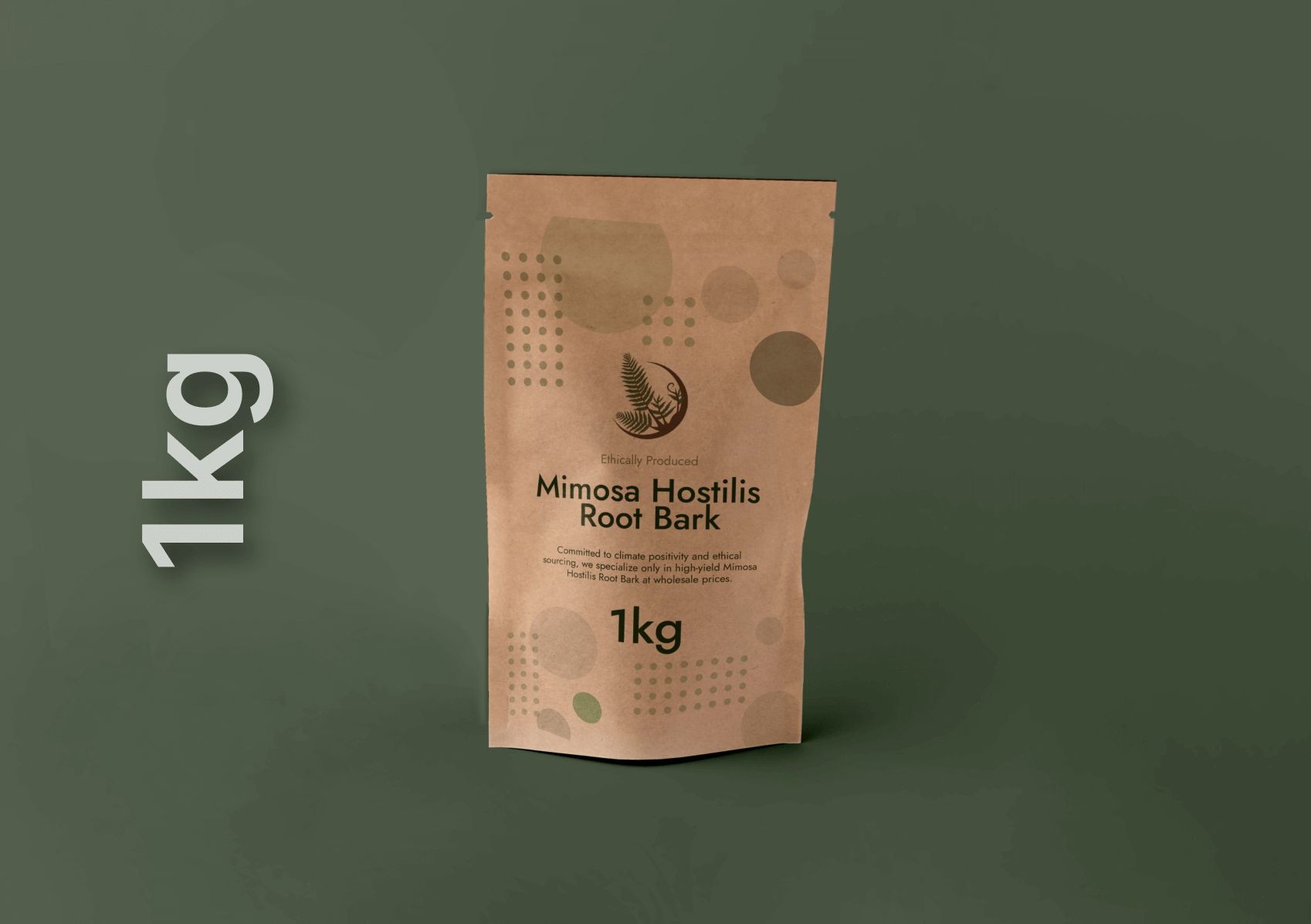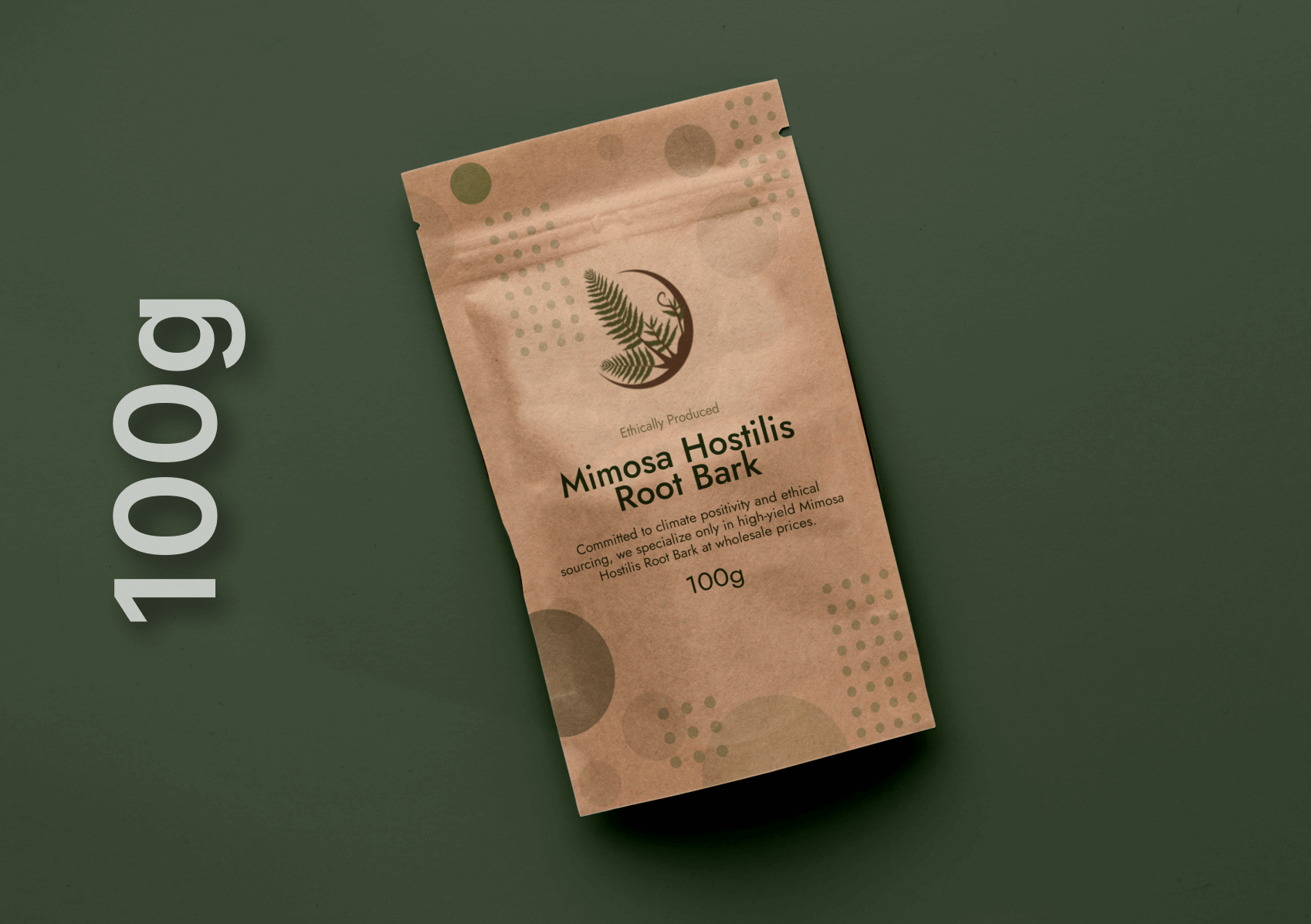Mimosa Hostilis, also known as Jurema Preta or Tepezcohuite, has skyrocketed to popularity among scientists, ethnobotanists, and holistic professionals. Comprehending the unique varieties of Mimosa Hostilis is crucial to attaining full potential efficacy, whatever your purpose—medicinal extract, cosmetic use, or ceremonial treatment. In-depth here is an exploration of each variety—bark powder, bark chips, ethanol extract, tinctures, and topical creams—to enable you to choose the best format for your specific use.
Understanding the Fundamental Advantages of Each Form
Bark Powder (Finely Milled)
Bark powder is the traditional and most accessible form of Mimosa Hostilis. It provides a broad platform for self-extractions, ceremonial decoctions, and skin pastes.
- Bioavailability: When taken as a decoction or tea, the fine particle size increases the release of alkaloids, allowing optimal absorption.
- Extraction Efficiency: Suitable for acid-base extractions, producing rich DMT concentrates when subjected to controlled lab processing.
- Cosmetic Applications: Blended with clay or aloe, it provides a cooling paste for sunburn soothers and healing of wounds, capitalizing on its tannin content.
Bark Chips or Strips
Bark chips preserve larger cellulose complexes and are therefore ideal for slow infusions and ritual brews.
- Slow Release: The rougher texture slows the liberation of alkaloids, providing a milder onset—suitable for religious rituals where pacing is essential.
- Reusability: Can be infused several times, optimizing yield over long preparation cycles.
- Ritual Aesthetics: Most traditions appreciate the natural appearance and texture of bark strips in ritual context.
Ethanol Extracts (Golden Resin)
Ethanol extraction congeals the active constituents into a concentrated resin, usually known as “Golden Incident“ or extract.
- High Potency: Ethanol selectively extracts alkaloids, flavonoids, and sapogenins, making it a highly potent product.
- Controlled Dosing: The resin can be measured exactly, allowing for stable dosing for research or individual protocols.
- Long-Term Stability: With proper storage in amber vials, the ethanol extracts have long-lasting efficacy for years without serious degradation.
Selecting the Ideal Form for Your Purpose
1. Ceremonial and Spiritual Use
For traditional ceremonial purposes, where intent and ritual are central, use bark chips or intact bark strips to respect ancestral tradition. The physical interaction with natural bark facilitates mindful preparation, resonating with the spiritual path.
Tips for Preparation
- Rinse chips to remove debris.
- Simmer in filtered water with a splash of vinegar for 4–6 hours.
- Strain with fine mesh and do several infusions for highest yield.
2. DIY Extraction and Research
Researchers and amateur chemists looking for quantitative outcomes will want to give priority to bark powder with acid-base extraction methods. This presentation provides control, efficiency, and reproducibility.
Extraction Workflow
- Acidify powder slurry (pH ~2.0) with citric acid.
- Filter plant solids, basify filtrate to pH ~12.
- Carry out solvent washes (naphtha or heptane).
- Evaporate solvent to yield a crystalline residue.
3. Topical and Cosmetic Uses
For anti-inflammatory, wound healing, or skin rejuvenation purposes, mix bark powder as a topical cream or gel:
Formulation Step
- Mix 5–10% Mimosa Hostilis powder with a neutral base (e.g., cetomacrogol cream).
- Gently heat to blend.
- Package in sealed containers.
- Apply twice a day to affected areas.
Maximizing Efficacy: Best Practices and Quality Control
Source Verification
Always confirm botanical authenticity. Insist on a certificate of analysis (COA) that guarantees Mimosa Hostilis (Genus: Mimosa, Species: hostilis) and tests for heavy metals and microbial impurities. Quality begins at the harvest.
Particle Size and Distribution
Fine powders (<200 microns) allow for uniform extraction and consistent dosing. Purchase a laboratory-grade sieve to measure particle distribution.
pH Monitoring
Having the proper pH in place during extraction guarantees maximum alkaloid yield. Use calibrated pH strips or a pH meter—accuracy within ±0.1 pH units is required.
Storage Conditions
- Powder and chips: Store in vacuum-sealed, opaque containers at <25 °C.
- Ethanol Extracts: Amber glass vials, store at 4–10 °C.
- Topicals: Store in sterile, tamper-evident containers; refrigerate if no preservatives are employed.
Comparative Analysis of Form Potencies
| Form | Extraction Yield | Onset Time | Ideal Use Case |
|---|---|---|---|
| Bark Powder | Moderate–High | 1–2 hours | DIY extractions, topical cosmetics |
| Bark Chips | Moderate | 2–4 hours | Ceremonial brews, multiple infusions |
| Ethanol Extract | Very High | 15–30 minutes | Research dosing, capsule ingestion |
| Tinctures | High | 30–60 minutes | Flexible dosing, liquid formulations |
Scaling Up: From Lab Bench to Small-Scale Production
Batch Consistency
- When scaling up to larger batches, standardize the protocol:
- Record all variables: temperature, time, pH, ratios of solvents.
- Make in-process pH and filtration clarity checks.
- authenticate each batch using thin-layer chromatography (TLC) or GC–MS for alkaloid profiles.
Regulatory Compliance
- Depending on the jurisdiction, Mimosa Hostilis extracts can be regulated. Make sure you obey local regulations for:
- Controlled substances (DMT content).
- Cosmetic product registration for topical use.
- Food-grade safety in case of producing ingestible extracts.
Advanced Tips for Supercharging Efficacy
Synergistic Co-Extracts
Mix Mimosa Hostilis with Syrian Rue (Peganum harmala) or Banisteriopsis caapi to modulate MAO inhibition, boosting the oral bioavailability of DMT alkaloids.
Temperature Cycling Techniques
- Apply cold–hot cycles on decoctions to break cell walls and liberate alkaloids more effectively. Alternate between:
- Cold soak (overnight at 4 °C).
- Gentle simmer (40–50 °C for 2 hours).
Ultrasonic Extraction
Ultrasonic probes can speed up alkaloid liberation, cutting extraction time by as much as 50% without compromising alkaloid integrity.
Conclusion
Maximum impact with Mimosa Hostilis depends on choosing the appropriate form for your particular purpose. Whether ceremonial authenticity, research accuracy, or cosmetic strength tops your list, the critical factors—form, method of extraction, and quality control—are all tied directly to your application. With these specific details, you can proceed with confidence and unlock the full potential of Mimosa Hostilis while leaving other content in the dust.




